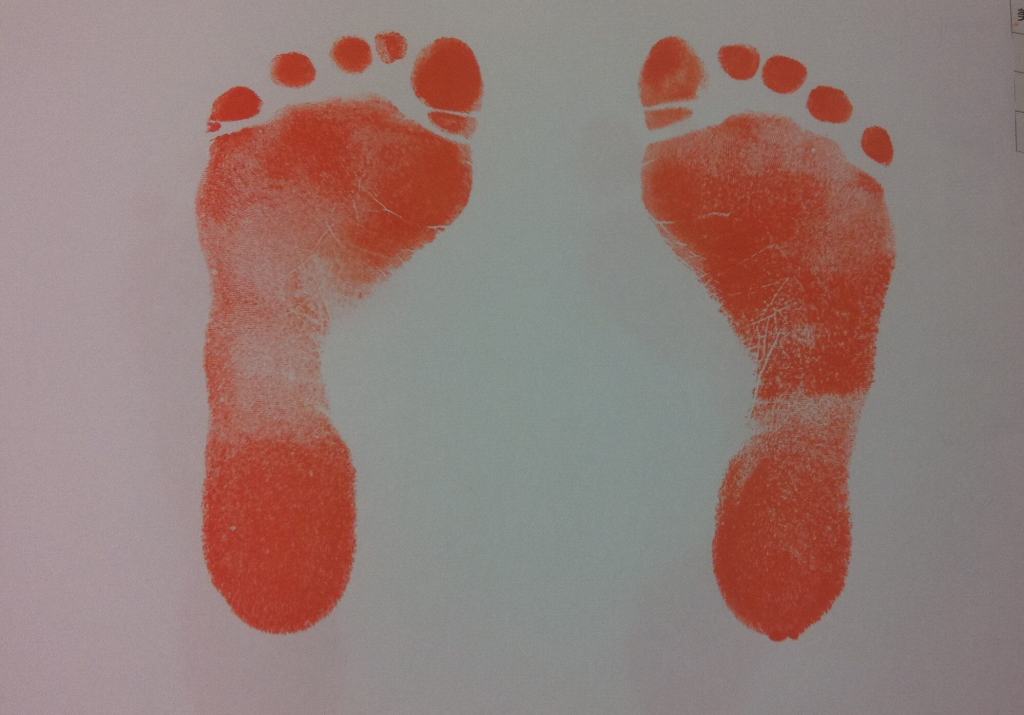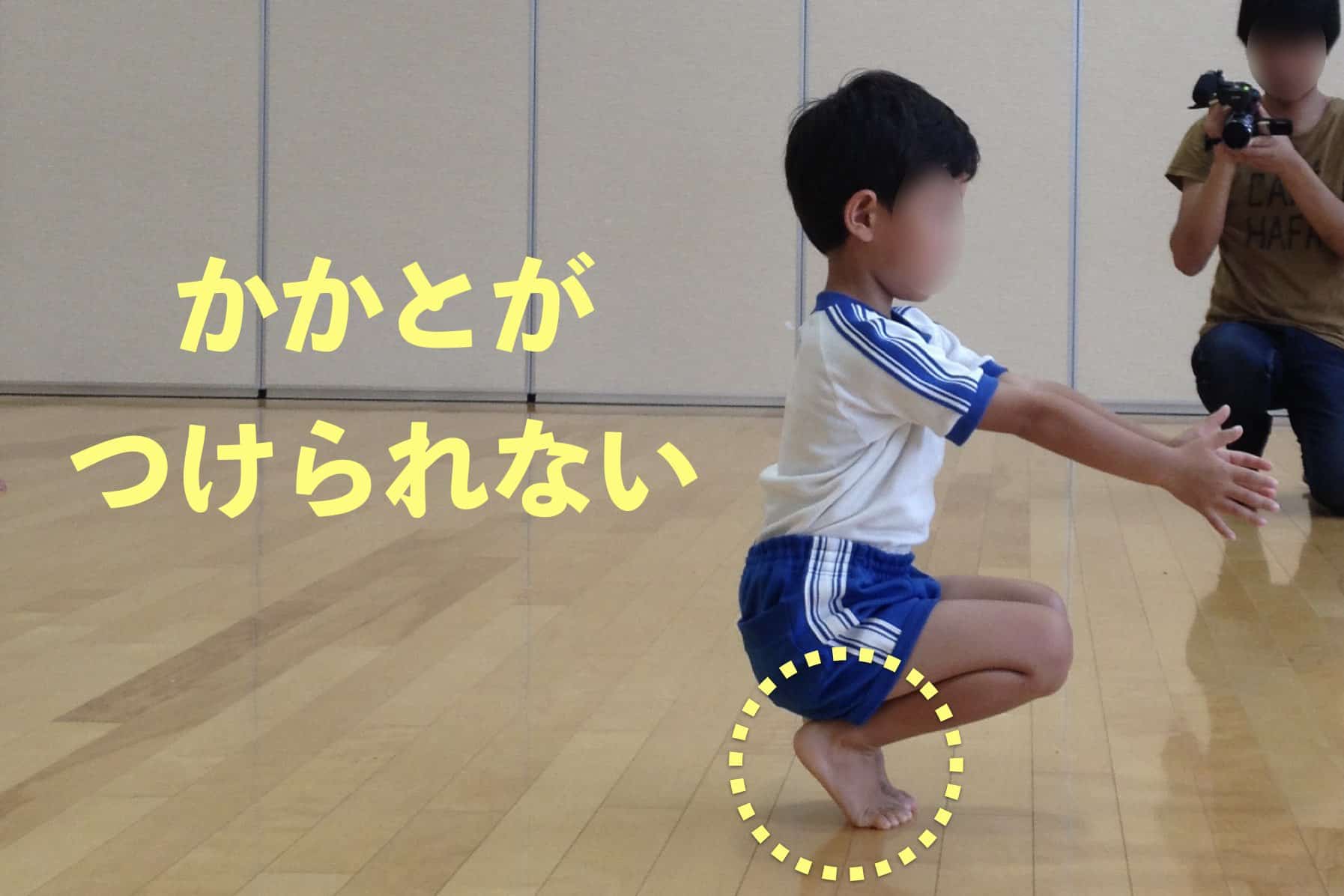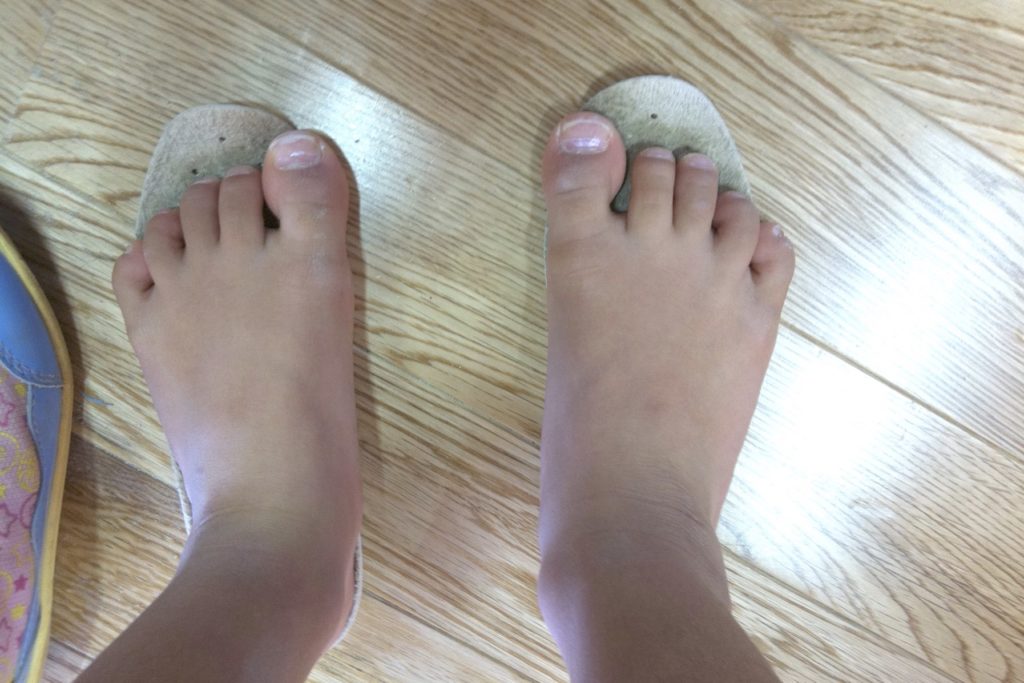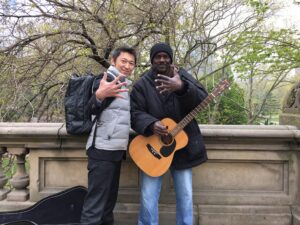第12話|危機感抱く保育士
保育士の危機感

私の元へ保育園児の大量の足型(フットプリント)が持ち込まれました。園児の運動能力低下を心配した福岡県筑後地方保育士会(188園)の代表者が、何とかならないかと相談に来られたのです。

その保育士さんは「子供の体に異変が起きている」と話されました。バランス感覚が悪い、すぐに転ぶ、転び方が下手、疲れやすい−。けがを恐れ、ブランコなどの遊具も取り除かれている園もある今日、子供の遊びの質が劣化しているためではないか。保育士仲間で集まると、自然とそんな話になるおいうことでした。

同じころ、バレエ教室を主宰する友人からも、ジャンプのときに床にかかとから着地したり膝が伸びきったまま着地する子や、行進の時に手足が同時もしくは手が振れない子がいると聞き、驚いていたところでした。
じっとしているのが苦手な園児のフットプリントを取るのは実に難しく、それだけで足裏の状態を判断するのは無理でしたが、保育士さんたちの子供たちを思う気持ちには応えたい。そのためには、別の物差しを用意する必要がありました。
園児の運動能力を調査
不自然なカラダの使い方

答えは現場にあると考え、「ジャンプ」「行進」「しゃがみ」の三つを判断基準にして、園児の運動能力の調査を開始。ばらつきが出ないよう、巧拙の判断は私が全て行いました。いくつかの園を回ると、しゃがみ、ジャンプ、行進のできない園児が結構いました。

また、上履き保育より、はだし保育の方が圧倒的に運動能力が高いだろうと思っていたのですが、私の見る限り、三つの判断基準においてはそこまでの差がないことも意外でした。
また、体育教室の実施の有無も運動能力にはあまり差がありませんでした。まず気づいたのが、乳幼児のハイハイの不自然さでした。生まれてすぐに靴下を履かせるからでしょうか、親指を使っていないのです。
3歳から足指が変形

※浮き指(4、5指が地面から離れている)

※かがみ指(2〜4指が下を向いている)
それに子どもとはいえ、足に合わない靴を履いているためか、大人のような足指の変形も見られました。「瞬間的に体を動かす鬼ごっこや木登りのような足指を使う遊びも減っている」という保育士さんの証言もありました。
合わない靴を履いている現状

サイズが小さくて、中敷から親指や小指がはみ出している

靴の中で足が滑って、足の跡が前についている

横幅が合わず、中敷から親指や小指がはみ出している
ひろのば体操
大人同様、用事も足指を訓練したら、何か変化が生まれるのではないか。でも、ただでさえ忙しい保育士さんの業務。子供のためとはいえ、負担が増えたと思われたら広がりは望めません。覚えるのが難しかったり、やる気や金銭的なことで続けられなかったりするやり方では、机上の空論となってしまいます。

いつでも、どこでも、誰にでも、簡単にできる方法はないか。そうして考えついたのがクリニックでも指導を行なっていた「ひろのば体操」という足指の体操でした。ひろのば体操はやがて、子どもだけでなく、大人の体も劇的に変えることになるのです。
ひろのば体操
足指を広げて(=ひろ)伸ばす(=のば)、足指と足のストレッチのこと。左右の足を合わせて1日1回、5分もやれば効果があります。
YOSHIRO SOCKS
足指専門の理学療法士として積み上げてきた20年間の知識や経験を生かし、足指を広げて伸ばす靴下を開発。人間本来の姿勢や運動能力に戻します。
Fear of preschool teachers
Two years ago I received many kids’ footprints from a preschool. A representative of the Preschool Teachers Association of Chikugo Region, Fukuoka, which consists of 188 preschools, was concerned about the kids’ athletic ability going down and asked me for advice.
The representative who is also a teacher herself told me that there were abnormalities in the kids’ bodies such as being unable to balance themselves well; falling/tripping easily; falling and hurting themselves badly; and getting tired easily. The teachers were so concerned about the kids’ hurting themselves that some preschools removed the swings. Whenever teachers gather, they’d talk about the way the kids play nowadays has gotten inferior. Around the same time a friend of mine who runs a ballet school told me that there were some kids who land on their heels or land with their knees straight after a jump or some who march with their arms on one side going forward with the foot on the same side or can’t swing their arms rhythmically at all. It was surprising to hear that this is how it is today.
The little kids were hyper that it was hard to get the correct footprints of their feet and analyze from them, but I wanted to help the teachers who care so much about their kids. I needed to come up with a different way.
Checking on the kids’ athletic abilities
As I believed that the answer must lie where the kids were, I started checking on their athletic abilities based on the following 3 criteria: jumping, marching, and squatting. In order to keep it on the same criteria, I myself judged all results.
As I visited some preschools, I found out that there were kids who were unable to jump or march properly just like my friend told me. Also, I at first assumed that the kids in barefoot had better athletic abilities than the ones with room shoes on, but there wasn’t as much difference based on those 3 criteria as I initially thought, which was unexpected. The use or non-use of a gym did not seem to affect the results either.
The first thing I noticed was how unnatural some infants’ crawling was. Probably because they’ve worn socks since right after they were born, they are not using their big toes at all. Also some had feet with deformed toes because of wearing wrong sized shoes, just like adults. Some teachers reported that they don’t play tags nor climb trees any more because they require fast movements and use of toes.
Wouldn’t there be some changes if we train the kids on toes just like the adults? But I didn’t want to add too much burden onto the teachers, as they were already busy the way they were. If the method was too complicated or costly, it will just end up as an armchair theory and defeat the purpose of being able to continue.
Isn’t there an easy way that we can do anywhere at any time? Now I finally came up with this toe exercise called the ‘FC method,” which later turned into “HIRONOBA” exercise. “HIRONOBA” would eventually change not just the kids but also many adults dramatically.














